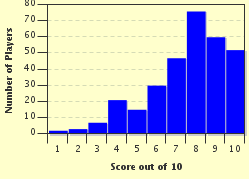Quiz Answer Key and Fun Facts
1. Which is the first planet in the solar system from the sun?
2. Here we are, to the next planet: VENUS. We can't see the surface of Venus from space in visible light. Why?
3. We arrive on the next planet after our home planet Earth. It is MARS. Mars is called the red planet. But why does this planet appear red?
4. Ah! Now we arrive at the largest planet in the solar system. It is JUPITER. Which of the following would you find on Jupiter?
5. Here we are at the next planet SATURN. This gas giant planet has beautiful rings. The second largest moon in our solar system is also a natural satellite of Saturn. What is its name?
6. We come to the next planet - URANUS. Uranus along with Neptune are categorised as what type of planet?
7. Neptune was the first planet to be found by which method?
8. Here we come to a dwarf planet - PLUTO. This now-'dwarf' planet was considered the ninth planet of our solar system from its discovery till 2006. Which of these is a satellite of Pluto?
9. Between which two planets is the asteroid belt found?
10. Which of these chemical elements is the most abundant in the sun?
Source: Author
vishsapprak
This quiz was reviewed by FunTrivia editor
NatalieW before going online.
Any errors found in FunTrivia content are routinely corrected through our feedback system.

